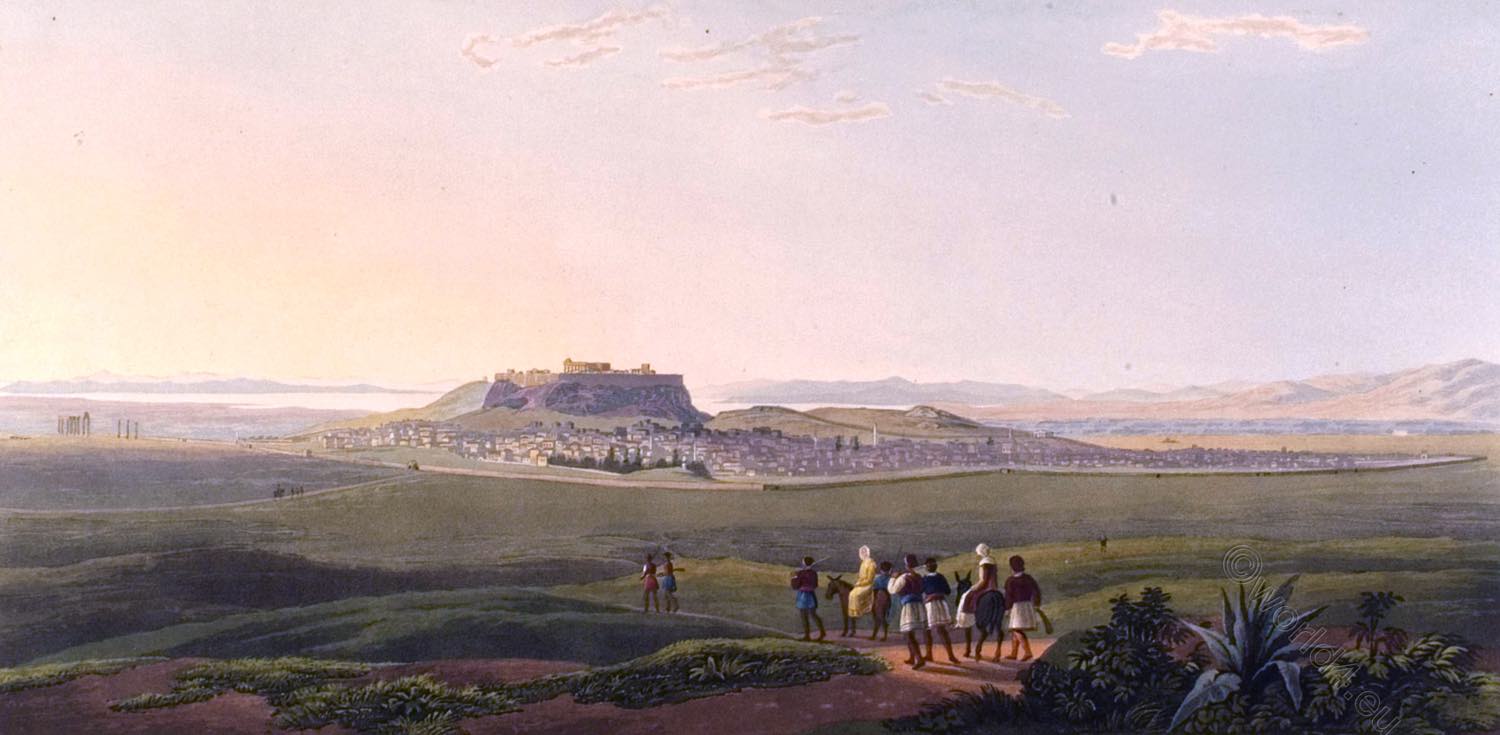The Monument of Philopappus (Greek: Μνημείο Φιλοπάππου) is an ancient Greek mausoleum dedicated to Gaius Julius Antiochus Epiphanes Philopappus (65-116 AD), a prince of the kingdom of Commagene, Anatolia (Asia minor). It is located on Museum Hill in Athens, Greece, southwest of the Acropolis.

THE MONUMENT OF PHILOPAPPUS.
ATHENS.
"Cold is the heart, fair Greece, that looks on thee.
Nor feels as lovers o'er the dust they loved;
Dull is the eye that will not weep to see
Thy walls defaced, thy mouldering shrines removed
To guard those relics ne'er to be restored.
Curst be the hour when their isle they roved,
And once again thy hapless bosom gored,
And snatch'd thy shrinking Gods to northern climes abhorr'd!"
Childe Harold’s Pilgrimage. Canto the Second. By George Gordon, Lord Byron
The space between the Olympeion and the Museum is strewn with fragments of overthrown temples, huge blocks of stone, and sculptured marble;— the graceful little fountain by the Albanian gate, the majestic columns of Olympian Jove, and Adrian’s gate, giving increased severity to the desolate character of the scene by rendering the desolation more conspicuous.

South. Hills around the Acropolis. The Philopappou Hill with the Philopappos Monument. Odeion of Herodes Atticus. The Odeon of Herodes Atticus is an ancient theatre at the foot of the Acropolis Rock in Athens.
On the site of the Museum, and near to the banks of the Ilissus (a sacred river), are the remains of a structure, composed of brick, small stones, and cement, originally cased, or coated with marble. The cell or chamber is arched, and the substruction, which is exposed by the falling away of the embankment that concealed it, is placed upon the solid rock.
The basement story built of the grey Hymettian marble, and the soft stone from the Piraeus, is adorned with a bold alto-relievo, representing a warrior standing in a chariot drawn by four horses, preceded by a crowd of servitors, and followed by the goddess of Victory; the figures all in large life. The superstructure, of Pentelic marble, terminates in the form of a large pedestal, which is believed to have supported an equestrian statue, the workmanship of Praxiteles.
A form of the surviving ruin is semicircular, the convex front being towards the Piraeus; it consists of two niches, but there must have been a third on the left side of the facade to complete the symmetry. The niche on the right was occupied by a statue, sedent, and underneath, in Greek, this inscription: “King Antiochus, son of King Antiochus.” In the central niche was another figure, on a tablet beneath which were these words “Philopappus, son of Antiochus Epiphanes of Bisa;” and the inscription under the third figure was as follows “Basileis Seleucos Antiachou Nikator.”
In the Barbarini library at Rome there is a MS. dated 1465, copied from Cyriac of Ancona, in which the monument of Philopappus is represented as having been eighty feet in height, and a drawing of the original design accompanies the description. King Antiochus was a great bene- factor to the Athenians, who assigned, in gratitude, this demi or quarter of the town to the tribe Antiochis. Here they remained located until the supremacy of Pompey the Great, who removed them to Rome, and degraded their descendants to the rank of citizens.
The architecture of Philopappus’ monument has divided the applause of travelers, some have discovered in the design not only faults but deformities, others, on the contrary, contend that it is chaste, elegant, and imposing, even in the last moments of its existence. None who visit Athens, however, will neglect the scene, or fail to participate in this question of taste and criticism from the compensation which the panorama from the spot must inevitably afford.
Source:
- The Rhine, Italy, and Greece in a series of drawings from nature by George Newenham (1790?-1877). London: Fisher 1841.
- Scrapbooks of mounted views, portraits, etc., relating to Europe and Egypt, 1891-1894 by William Vaughn Tupper (1835-1898). Tupper Scrapbooks Collection (Boston Public Library) 1891.
Discover more from World4 Costume Culture History
Subscribe to get the latest posts sent to your email.






